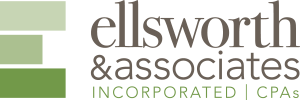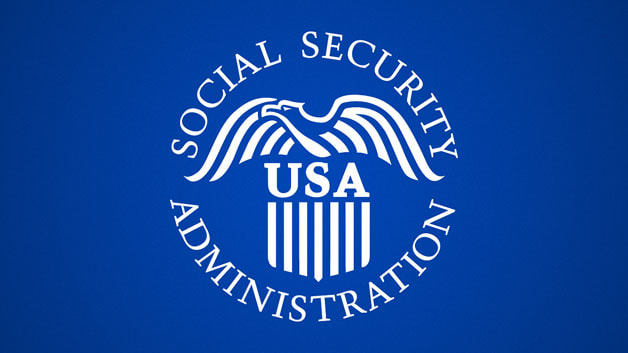|
For one reason or another, you may find yourself in a situation where you've lost track of a retirement account like a 401(k) or pension.
There are several ways this can happen:
Luckily, there are several handy but little-known ways to retrieve retirement account information:
Once you've located a lost retirement account, you can roll it over into an IRA if it's yours, or you can take several approaches if it is an inherited asset. Reach out if you'd like to discuss your options regarding tax-advantaged retirement accounts.
0 Comments
Inheriting a retirement account like a 401(k) or an IRA is more complicated tax-wise than if you’d been left a house or a set of golf clubs. Here are some tips on how to use a “stretch out” to avoid being hit with a big tax bill. Stretching It OutA stretch out is a plan to start taking small distributions from an inherited retirement account over a period of time. It allows a person who inherits a retirement account to avoid paying income tax on the entire amount right away. Taxpayers also benefit by keeping the account as a tax-advantaged investment vehicle that can grow over time. Example: Dee Lee Beloved, 30 years old, inherits a $1 million IRA from her deceased uncle. If she were to take the whole amount in a lump sum, she would move into a higher tax bracket and pay 39.6 percent tax on most of her inheritance. Instead, she opts to stretch-out the IRA distributions over the next several decades, based on IRS life expectancy tables for her age. She thus receives smaller, more tax-efficient regular payments each year. She invests the balance of the account in mutual funds and hopes its value will grow over time. Choose from Two OptionsThe IRS requires you to take full disbursement of an inherited retirement account within five years, unless you create a formal stretch-out plan to take small regular payments over an extended period. This gives you two stretch-out options:
Extra Option for SpousesWhen spouses inherit retirement accounts, they are allowed to treat it as if it were theirs originally. That means they can continue making tax-advantaged contributions and can start withdrawing funds after reaching retirement age. But younger spouses may want to consider converting accounts to stretch outs anyway. That’s because you can start taking distributions immediately, instead of waiting until age 59 ½ to withdraw funds penalty-free. Get HelpStretch outs can be complicated, and some inherited accounts have special rules limiting the use of stretch outs. The best bet is to get professional assistance to help you create an optimal tax strategy when you receive an inheritance.
The maximum contribution to 401(k) accounts is being raised by $500 in 2018, the first increase in three years. If you have not already done so, now is the time to plan for contributions into your retirement accounts in 2018. Retirement Contribution Limits
Social Security
Don't forget to account for any matching programs offered by your employer as you determine your various funding levels for next year.
How the Required Minimum Distribution WorksWe're always being reminded to save for retirement in tax-advantaged accounts like 401(k)s or IRAs. But did you know the government does an about-face and forces us to take money out of those accounts once we reach retirement? It's called the required minimum distribution (RMD) rule. Here are some tips you should know about RMDs well before you reach retirement age:
RMD rules can be confusing, and are a good example of why tax planning is such an important component of a retirement strategy. Please call if you have questions about any tax obligations related to your retirement accounts. As the year comes to an end, there are several tax-saving ideas you should take into consideration. Use this checklist to ensure you don't miss an opportunity before the year is over.
While every retirement plan has similar early withdrawal penalty exemptions, they are not all the same. Being aware of these slight differences within 401(k) plans can help you get around a 10 percent tax penalty if you withdraw funds from the plan before reaching age 59 1/2. This is the case because a basic rollover of funds into a Traditional IRA is a readily available option to avoid the penalty. You should consider rolling over your 401(k) into an IRA prior to early distribution when:
Remember, by rolling the funds prior to pulling the funds for pre-retirement distribution you are avoiding the early withdrawal penalties, but you must still pay the applicable income tax. Bonus Retirement Plan TipsTwo other quirks in the retirement tax code to be aware of:
Is storing huge sums of money in a tax-deferred retirement account ever a bad idea? It is when you surpass the annual IRS limits. Whether deliberate or not, the penalties can be detrimental. Here's how overfunding happens and what steps you can take to solve the problem. How Overfunding HappensOverfunding retirement accounts occurs more than you might think. It can be the result of a job change that causes you to take part in two different employer retirement plans. Occasionally people forget they made IRA contributions earlier in the year and do it again later. Others forget that the IRA limit is the total of all accounts, not per account. The rules are complex. Traditional IRAs can't be added to after age 70½, while Roth IRA contributions are subject to income limits. In addition, all contributions are predicated on having earned income. IRAsThe yearly Roth and Traditional IRA contribution limit is $5,500 ($6,500 if age 50 or older). If you exceed this amount, you pay a 6 percent penalty on the overpayment every year until it's corrected, plus a potential 10 percent penalty on the investment proceeds attributed to the overfunded amount. The fix: If the overfunding is found before the filing deadline (plus extensions), you can withdraw the excess and any income earned on the contribution to avoid the 6 percent penalty. You will possibly owe a 10 percent penalty in addition to ordinary income tax on the earnings of the excess contributions if you're under age 59½. Frequently you can apply the contribution to the upcoming year. If your problem is due to age (70½ or older for a Traditional IRA) or income limit (for a Roth IRA), consider recharacterizing your contribution from one IRA type to another. 401(k)sThe rules for correcting an overfunded 401(k) are a slightly more rigid. You have until April 15 to return the funds, period. The nature of the penalty is also different. The excess amount is taxable in the year of the overfunding, and taxable again when withdrawn. So, you could pay the penalty several times on the same amount. And, in certain cases, overfunding a 401(k) could cause it to lose its qualified status.
The fix: If you suspect an overpayment situation, contact your employer right away. Adjust your contribution amount before the end of the year and try to get the problem resolved that way. Monthly Social Security and Supplemental Security Income (SSI) benefits for more than 66 million Americans will increase 2.0 percent in 2018. The Social Security Administration announced this week a 2 percent boost to monthly Social Security and Supplemental Security Income (SSI) benefits for 2018. The increase is the largest since 2012, and is based on the rise in the Consumer Price Index over the past 12 months ending in September 2017. For those still contributing to Social Security through wages, the potential maximum income subject to Social Security tax increases 1.2 percent this year, to $128,700. What Does It Mean for You?
Social Security & Medicare RatesThe Social Security and Medicare tax rates do not change from 2017 to 2018.
Note: The above tax rates are a combination of 6.20 percent Social Security and 1.45 percent for Medicare. There is also 0.9 percent Medicare wages surtax for those with wages above $200,000 single ($250,000 joint filers) that is not reflected in these figures. Please note that your employer also pays Social Security and Medicare taxes on your behalf. These figures are reflected in the self-employed tax rates, as self-employed individuals pay both halves of the tax.
Health Savings Accounts (HSAs) are a great way to pay for medical expenses, and since unused funds roll over from year to year, the account can also provide a source of retirement savings in addition to other plans like 401(k)s or IRAs. But be aware HSAs can also come with significant disadvantages and less flexibility when compared with other retirement investment tools. The GoodHSAs work best when they are used for their designed purpose: to pay for qualified medical expenses. Neither your original contributions to an HSA nor your investment earnings are taxed when used this way. This makes HSA funds valuable, given that medical costs are one of our largest expenses as we age. The Employee Benefit Research Institute estimates the average 65-year-old couple needs $264,000 to pay for medical care over the course of their retirement. Being able to cover that amount with pre-tax dollars greatly extends the value of retirement savings. In addition, unlike other retirement plans, there is no required distribution of funds after you reach age 70½. The BadFirst, you can only contribute to an HSA if you have a high-deductible health insurance plan. That means you will pay more out of pocket each year when you need to use health services, which could make it difficult to build a balance within your HSA. Second, contributions are limited. Currently, annual contributions to HSAs are limited to $3,400 a year for individuals and $6,750 a year for families. These limits get bumped up by $1,000 for people aged 55 or older. You also may only contribute to an HSA until your retirement age. Finally, HSAs typically have fewer investment options compared with other investment tools including 401(k)s and IRAs. The accounts often have high management and administrative fees. All this makes building HSA earnings tough to do. The UglyThe worst thing about HSAs: before you reach age 65, non-medical withdrawals from HSAs come with a whopping 20 percent penalty. Plus non-medical withdrawls are taxed as income. Even after age 65, both contributions and earnings are taxed when they are withdrawn for non-medical expenses.
In this way, HSAs compare unfavorably with 401(k)s and IRAs, which end their early withdrawal period earlier, at age 59½. They also have lower early withdrawal penalties of just 10 percent. HSAs are a powerful tool to help manage the ever-rising costs of health care. Knowing the rules and the costs associated with using these funds outside of medical expenses can help you get the most out of an HSA and avoid costly missteps. When it comes to choosing where to live during retirement, weather isn't the only consideration. State and local tax laws have a significant impact on your nest egg. The charts below show the highest and lowest state tax rates and costs of living, from data provided by nonprofit think tanks the Tax Foundation and the Council for Community and Economic Research. State Income Tax Rates
State and Local Sales Taxes(state and average local tax rates combined)
Property Taxes (Rankings based on the statewide average of local rates.)
If taxes were the only consideration in our retirement destinations, everyone would move to Alaska, which has no state income or sales taxes. However, the "last frontier" state also has one of the highest costs of living in the U.S. Therefore, you may also wish to consider which states have high and low costs of living. Don't Forget: Cost of Living
|
Archives
February 2018
Categories
All
|
|
Ellsworth & Associates, Inc. CPAs
513.272.8400 Cincinnati: 9624 Cincinnati Columbus Road, Suite 209, Cincinnati, OH 45241
|
© 2017 Ellsworth & Associates, Inc.
|











 RSS Feed
RSS Feed